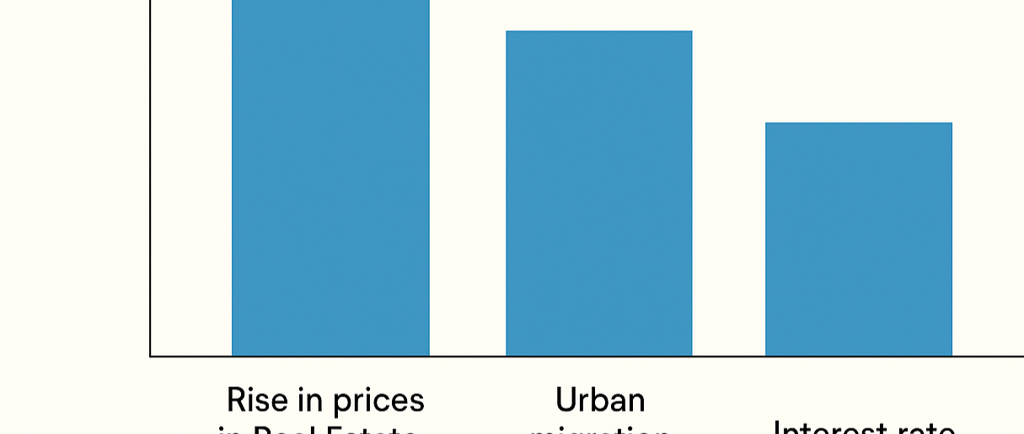Economic Forces Affecting Rent Costs
Discover the economic forces affecting rent across cities. Understand why renters are facing increased costs and explore the factors contributing to the rising rent. Learn more about the complexities of the rental market and how these forces impact you.
FINANCE & ECONOMICS
The Three Economic Factors That’s Affecting the Rent Prices


A chart showing the three factors affecting the Rental Prices
Describing The Three Factors
1. Rise in the prices of the Real Estate Sector
It simply means rise in the prices of the property due to various economic factors
a. Demand is more than supply. The number of people wants to buy property is more than total number of properties available for sale.
b. Construction costs are increasing day by day because of the increase in the cost of the materials like cement steel and labour needed for construction.
c. Urbanization of the prime locations of the growing cities generally increases the land value which leads to rise in prices of the real estate sector.
d. Government Policies like taxes, regulations and incentives can also impact property prices in the real estate sector.
2.Urban Migration
A bulk of people including students, individuals and families are migrating to urban cities for education, work and lifestyle opportunities. As a consequence, there is a surge in rising population in the cities and the housing supply is also struggling to keep pace with the growing demand for rental houses.
a. Job Opportunities: Urban cities offer more employment options with better salaries and career growth. So, the working professionals are migrating to urban cities creating extra demand for renting houses
b. Education Facilities: Urban Cities are home to the top universities, colleges and training institute So, the students are migrating to urban cities creating extra demand for renting houses.
c. Lifestyle Preference: People preferring cities for better healthcare, shopping, entertainment and social life. So, the lifestyle demand making more people to migrate to urban cities creating extra demand for renting houses.
3. Interest Rate
There are three kinds of rate of interest for loan will be discussed
Though the Repo Rate cuts making borrowing cheaper for banks overall but the Construction loan and Investment property loan remain relatively higher than Consumer home loan.
a. Construction property loan (Builders): Construction loan rates (for builders) are usually higher than home loan (retail) rates. Building new homes become more expensive. As a result, Builders often slow down or delay new housing projects because the profits fall and they don’t want to build if cost of borrowing is high. So fewer new apartments and rental properties enter the market. So, supply of new property in real estate sector stays tight.
b. Consumer home loan (Individual / First-time homebuyer): Home loan interest rates are decreasing rapidly making borrowing much easier for individuals. But relatively home loan rates are also still higher even after RBI repo rate cuts. So, the potential homebuyers stay in rental homes longer. This keeps the rental home demand high.
c. Investment property loan (Landlords): Investment property loan (Landlords) are usually higher than home loan (retail) rates. Property investors who take costlier investment loans may pass their higher interest costs to renters. To maintain their profit margin, Landlord increases rent.
Steps We Can Take for High Renting Prices
1. Take property lease for longer period to avoid frequent rent hikes
2. Explore the suburban areas of the metro cities for lower rent with almost same level of facilities like the urban areas.



